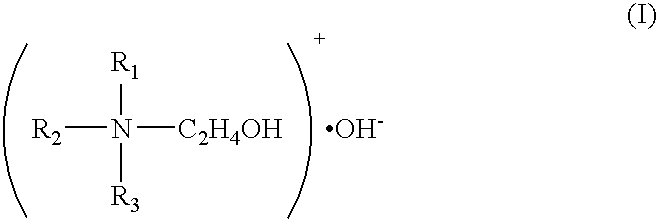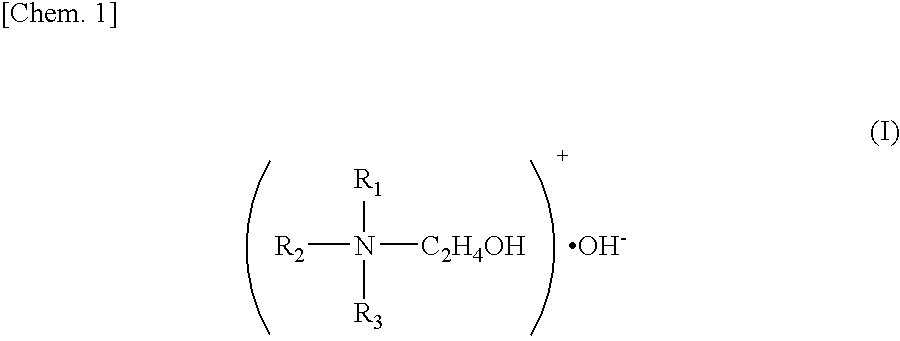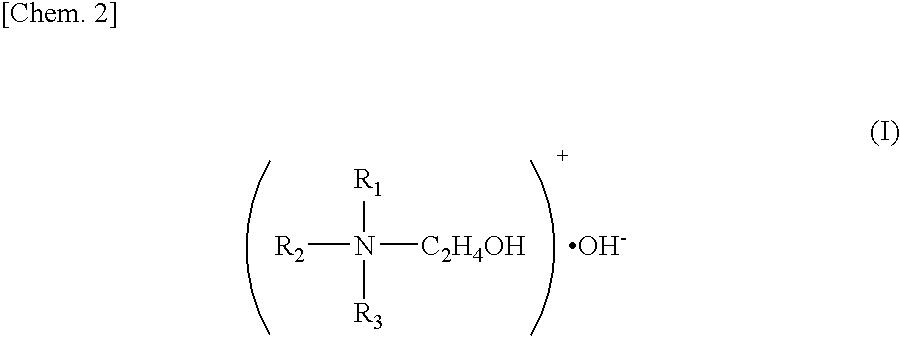Positive resist processing liquid composition and liquid developer
- Summary
- Abstract
- Description
- Claims
- Application Information
AI Technical Summary
Benefits of technology
Problems solved by technology
Method used
Image
Examples
examples
[0035]The present invention is explained below in detail by means of examples, but the present invention is not limited to these examples.
[0036]A positive resist [820, manufactured by Nagase & Co., Ltd., film thickness of approximately 17,000 angstroms] was spin coated onto a silicon wafer, which was thereafter baked at 120° C. for 10 minutes for the purpose of removing a solvent and increasing adhesion with the substrate. A process liquid composition was prepared with each ingredient shown in Table 1 dissolved respectively in pure water so as to be the composition shown in Table. A silicon wafer to which the above-described positive resist film was formed as a test piece was immersed in each process liquid composition at 25° C. for 10 seconds without stirring, which was then rinsed with running super pure water for 3 minutes. After rinsing, the test piece was drawn up, and wettability of the resist surface was observed visually. Also, the decreased amount of the film thickness befo...
PUM
 Login to View More
Login to View More Abstract
Description
Claims
Application Information
 Login to View More
Login to View More - R&D
- Intellectual Property
- Life Sciences
- Materials
- Tech Scout
- Unparalleled Data Quality
- Higher Quality Content
- 60% Fewer Hallucinations
Browse by: Latest US Patents, China's latest patents, Technical Efficacy Thesaurus, Application Domain, Technology Topic, Popular Technical Reports.
© 2025 PatSnap. All rights reserved.Legal|Privacy policy|Modern Slavery Act Transparency Statement|Sitemap|About US| Contact US: help@patsnap.com



